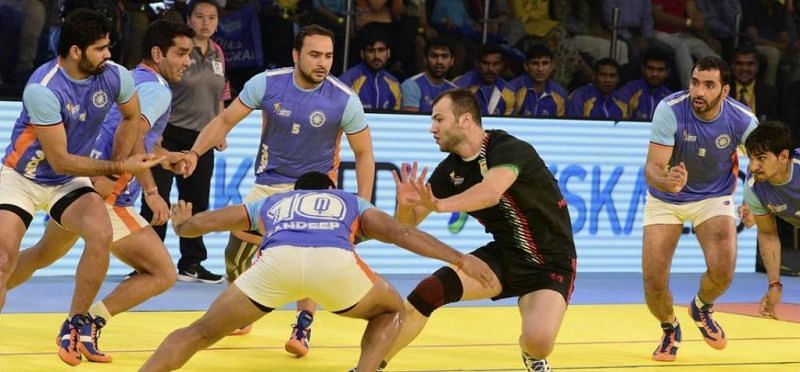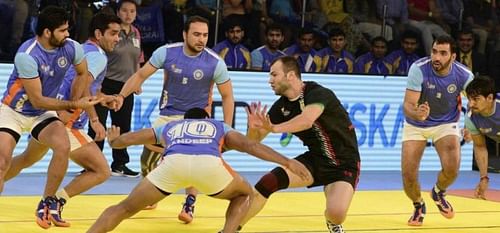
Why is kabaddi not an Olympic sport?

Stepping outside the shadows of greatness and making a name for yourself is a hard task to master. Especially in a country such as India, making your presence felt in a game apart from cricket is a rather tedious task.
The ancient game of kabaddi found a new lease of life when the Pro Kabaddi League was brought to the masses in 2014, with an aim to nurture the budding talent from all parts of India. With the inclusion of a women's kabaddi format, the game has seen more participation than ever before.
So it all comes down to one question, even after four seasons of the razzmatazz surrounding PKL and the World Cups, why is it not an Olympic sport? Here's the answer.
What are the qualifications for a sport to make it to the Olympics?
One of the main prerequisites for a sport to qualify for the Olympics is that the game 'should be played in at least 75 countries, spread across four continents'.
While kabaddi is played in almost 31 countries across the world, it does not meet the criterion of 75 countries or more and hence is disallowed in the Olympic arena.
Kabaddi did have a small amount of exposure at the Olympic level in 1936, when a demo of the game was carried out by the Indian team at the Berlin Olympics.
Should the blame fall on kabaddi's popularity?
If a sport newly introduced to the masses through an eight-city based franchise tournament can gather ten times the viewership on its inaugural season when compared to a global event such as FIFA, it only speaks volumes about the sport's popularity even before it was telecasted globally.
Apart from the glamour and glory, the Pro Kabaddi League brought with it a sense of belonging and security for the players, who could now showcase their skills on the global platform. While Manjeet Chhillar, Rohit Kumar, Rahul Chaudhari etc were unknown entities in the initial couple of seasons, the PKL ushered confidence into them and the prospective talents, taking the game to all corners of the world.
Such was the impact of the PKL that Star Sports announced that their viewership had gone up by almost 54% after PKL season one when compared to late 2013 and early 2014, a time when only the blueprint of the league was being laid out by its patrons.
From the first season in 2014 to the latest season in 2017, PKL has enriched the sport with some vital nutrients for its growth. International players have come to India in search of opportunities in the PKL while Kabaddi World Cups have only managed to open up the doors in countries where the sport has not found its bearings yet.
What's the current scenario?
It's been four seasons since the first Pro Kabaddi League, and the cash-rich tournament has changed lives.
If we turn back the clock three years, the nation was talking about mainly cricket with a touch of badminton and football. However, after the inaugural season of Pro Kabaddi League, there was more to talk about.
With every passing year, the word spread quicker than the Airtel ads on TV. Soon, the air was filled with comments on the game of kabaddi and little kids thronged to their nearest grounds, drew out some lines with thin sticks and rolled up their sleeves. It was time to play a new game, an intense yet thrilling game of kabaddi!
What does the future look like?
Now that the game is recognized in many parts of the world, more and more international players have started to approach their country's association in a bid to see their nation excel in the World Cups and Asian Games.
In India, the kabaddi players get a lot more recognition from the fans. Most of the big guns from the PKL have gone on to represent India in the Asian Games and the World Cup.
With the game spreading like wildfire and more talent being unearthed every season, the future looks in secure hands and in a couple of years, a lot more countries might have teams in the sport.